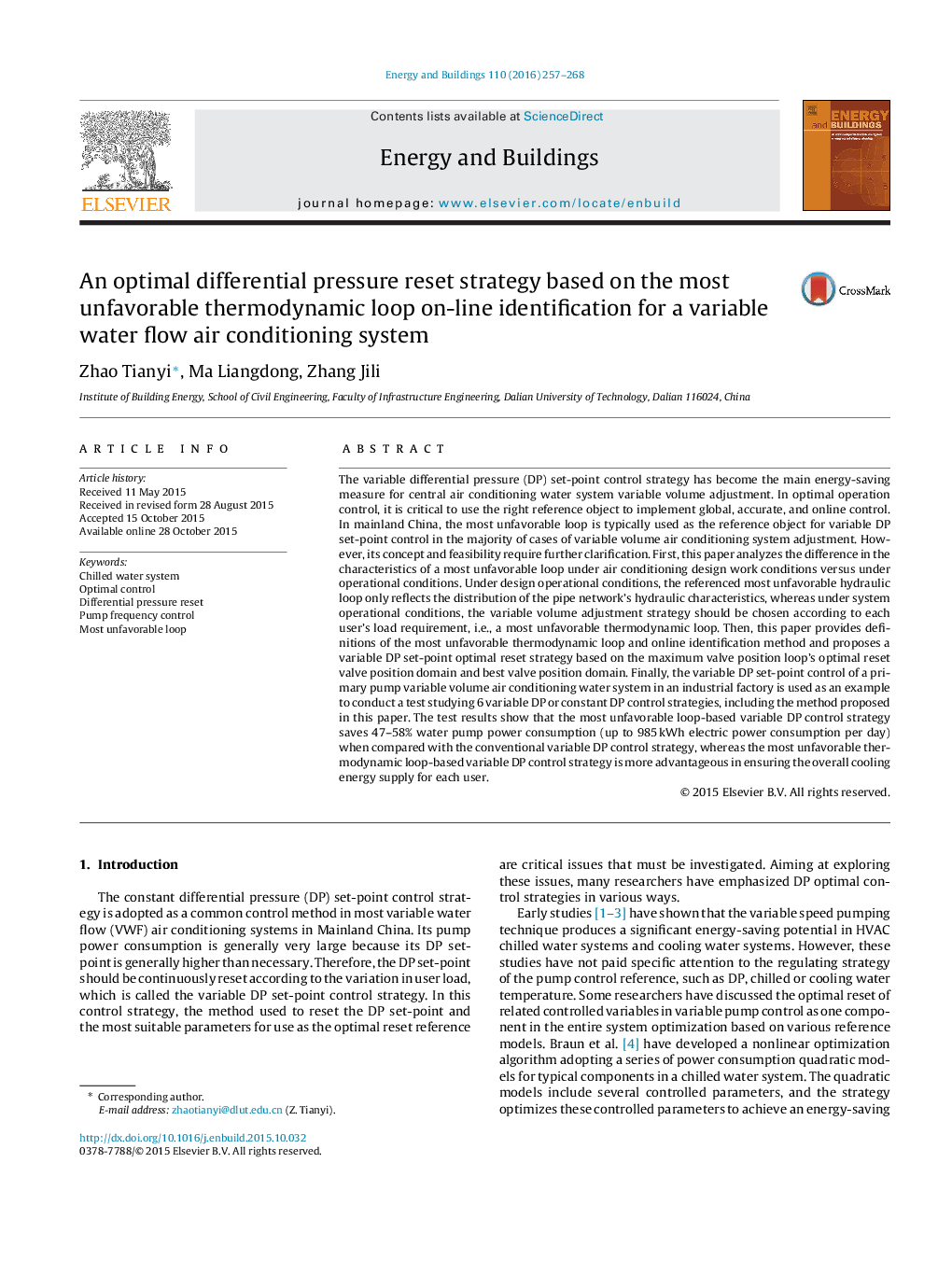| Article ID | Journal | Published Year | Pages | File Type |
|---|---|---|---|---|
| 262276 | Energy and Buildings | 2016 | 12 Pages |
•We define the most unfavorable thermodynamic loop and its online identification method for regulating the pressure set-point.•We use the maximum valve loop's optimal reset valve position domain and best valve position domain to calculate the proper pressure set-point.•Application show that the most unfavorable loop-based variable DP control strategy is energy efficient and more advantageous in ensuring the overall cooling energy supply for each user.
The variable differential pressure (DP) set-point control strategy has become the main energy-saving measure for central air conditioning water system variable volume adjustment. In optimal operation control, it is critical to use the right reference object to implement global, accurate, and online control. In mainland China, the most unfavorable loop is typically used as the reference object for variable DP set-point control in the majority of cases of variable volume air conditioning system adjustment. However, its concept and feasibility require further clarification. First, this paper analyzes the difference in the characteristics of a most unfavorable loop under air conditioning design work conditions versus under operational conditions. Under design operational conditions, the referenced most unfavorable hydraulic loop only reflects the distribution of the pipe network's hydraulic characteristics, whereas under system operational conditions, the variable volume adjustment strategy should be chosen according to each user's load requirement, i.e., a most unfavorable thermodynamic loop. Then, this paper provides definitions of the most unfavorable thermodynamic loop and online identification method and proposes a variable DP set-point optimal reset strategy based on the maximum valve position loop's optimal reset valve position domain and best valve position domain. Finally, the variable DP set-point control of a primary pump variable volume air conditioning water system in an industrial factory is used as an example to conduct a test studying 6 variable DP or constant DP control strategies, including the method proposed in this paper. The test results show that the most unfavorable loop-based variable DP control strategy saves 47–58% water pump power consumption (up to 985 kWh electric power consumption per day) when compared with the conventional variable DP control strategy, whereas the most unfavorable thermodynamic loop-based variable DP control strategy is more advantageous in ensuring the overall cooling energy supply for each user.
